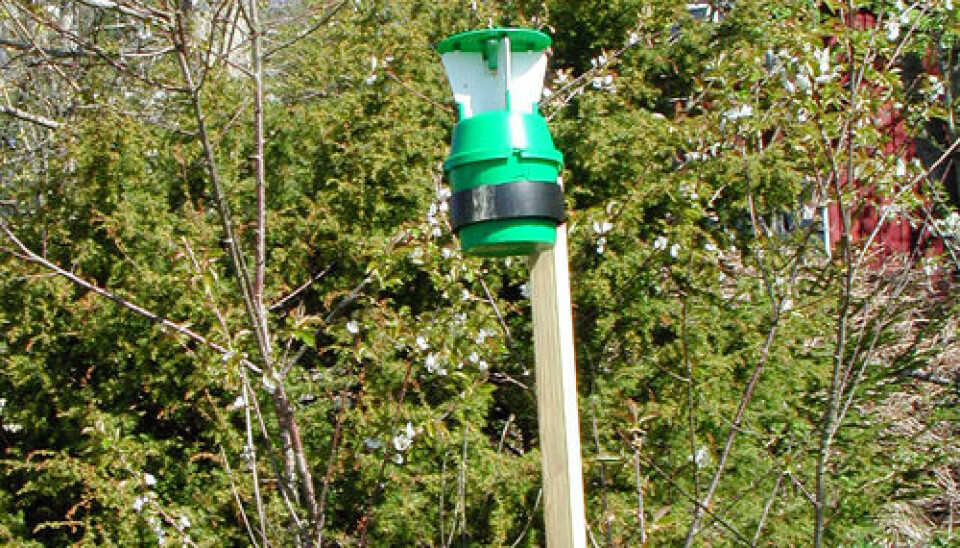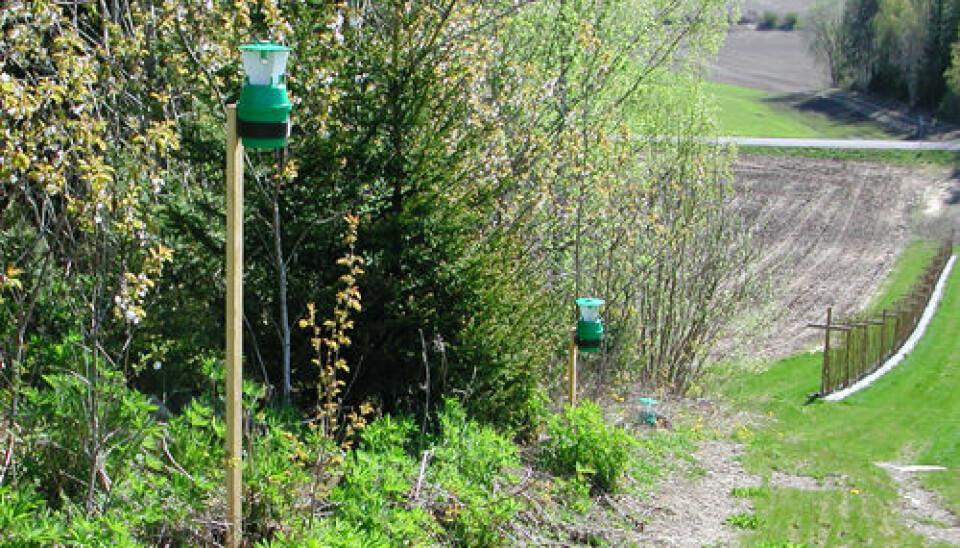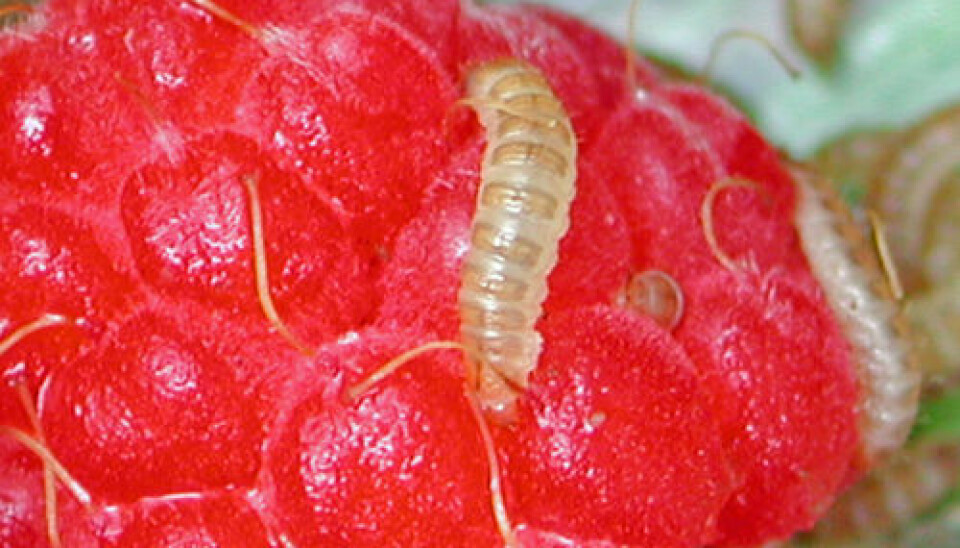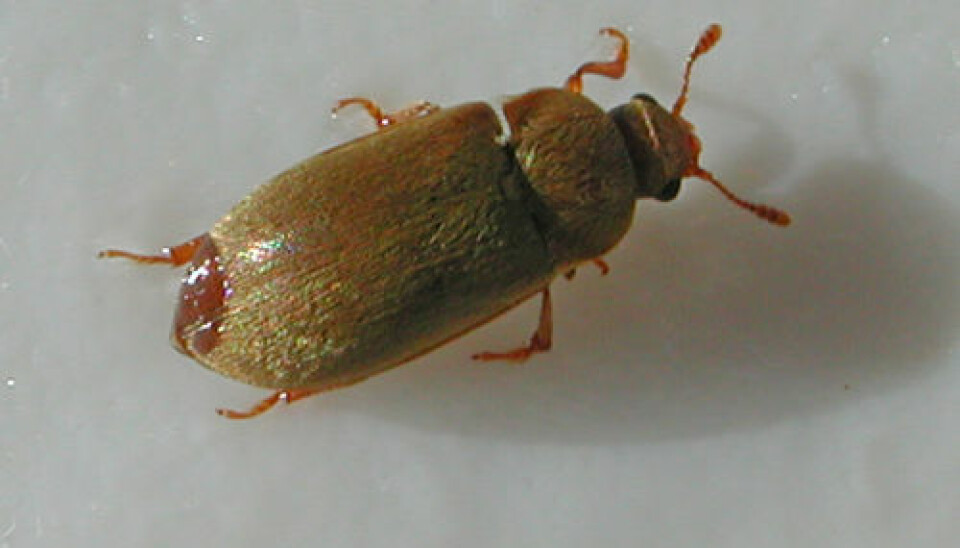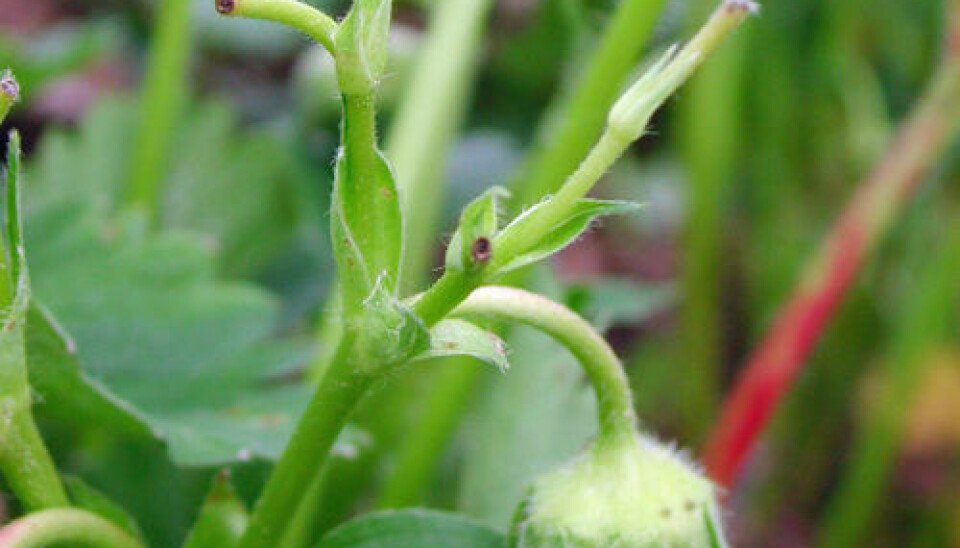
De-bugging strawberries and raspberries
Beetles do a lot of damage to Norwegian strawberries and raspberries. Scientists are seeking effective alternatives to insecticide.
Denne artikkelen er over ti år gammel og kan inneholde utdatert informasjon.
Norwegian researchers are participating in a European research project aimed at developing non-toxic protection against insect pests.
One of the bugs targeted is the strawberry blossom weevil (Anthonomus rubi). It is a common visitor to the fields of commercial berry growers.
“The strawberry blossom weevil is prevalent everywhere you have strawberries,” says researcher Nina Trandem of the Norwegian Institute for Agricultural and Environmental Research (Bioforsk).
This weevil, a type of beetle, is found all over Norway and it can also attack roses, raspberries and blackberries.
The berry becomes a hatchery
The weevil prowls around for budding blossoms among the berries and uses its proboscis to puncture a hole in a flower bud.
First it snacks on the pollen inside. If it’s a female, it deposits eggs in the bud. Then it climbs down the flower stem and cuts it partially or completely off.
As a result, the flower bud wilts and what would have grown into a berry becomes a hatchery and larva condo.
Crops can be halved
Trandem explains that damage to strawberry fields can be significant and that the strawberry blossom weevil is the biggest pest problem encountered by Norwegian berry farmers.
“Their crops can be halved,” says Trandem.
The beetle also opts for the largest buds, which would have become the biggest berries.
Poor defences
Current insecticides are not very effective against the strawberry blossom weevil. And it is generally best to reduce the use of such sprays.
Together with colleagues in several EU countries, Bioforsk researchers are now attempting to develop non-toxic methods for defeating these long-snouted pests.
The project has been funded by the European research programme CORE Organic, which focuses on green solutions for agriculture.
Experts from six countries are working on development of a trap that would be a boon to strawberry growers. It will be equipped with scents that attract weevils on a large scale.
The goal is to make the same trap stop another insect pest, the tarnished plant bug (L. rugulipennis), which causes deformed strawberries. So the trap needs to have a scent that attracts both species.
Double whammy
The trap will be based on proven solutions as well as new innovations.
The researchers intend to mix a cocktail of various attractive scents, ones the beetles associate with tasty berry flowers along with pheromones that their potential sexual partners emit.
The trap itself consists of a scent unit, plastic panels with captivating colours and a container where the beetles collect and cannot escape.
Defending raspberries
Work is underway on a similar device for defending raspberries. The same strawberry blossom weevils are one of the targets.
But the trap will also stop a beetle that does not give a hoot about strawberries − the raspberry beetle (Byturus tomenetosus).
The raspberry beetle attacks cultivated as well as wild raspberries. The light brown grubs of these beetles feed on the stock ends of the berries.
The raspberry beetle lays its eggs in the raspberry blossom and when the grub develops it eats the berry from the inside.
“Anyone who has picked wild raspberries has definitely seen these grubs,” says the researcher.
Insecticide sprays can effectively stop this beetle. But organic farmers, who do not want such sprays in their arsenal, are up against a tough enemy.
Swallowing such grubs along with your raspberry will not hurt you, but most people like to buy berries that have no creepy-crawly stowaways.
Norway’s former Minister of Agriculture, Lars Sponheim, said a few years ago he could not care less if there were a few larvae in his raspberries. But Trandem thinks few consumers would concur.
“No matter how organically oriented people are, they would prefer not to have grubs in their raspberries,” she says.
If the new traps are a success, many of these insect pests can be stopped simultaneously.
Translated by: Glenn Ostling







